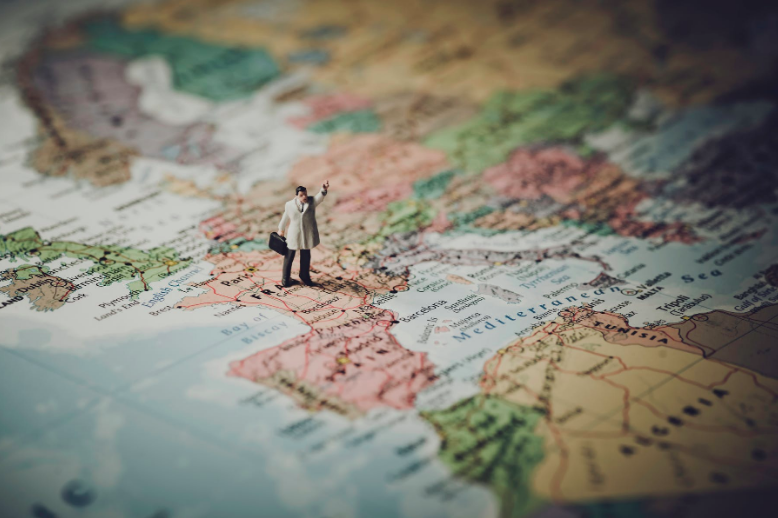In the digital age, it can be tempting to believe that where you live no longer matters in relation to what you buy. And it can be easy for non-local businesses to discount localized information. After all, it shouldn’t matter where you customers live because they can always buy your product online, right? And with online shopping continuing to expand its reach from clothing to electronics to paper towels, geographic relevance appears to be taking a backseat.
But where your customers live is still relevant to their purchasing habits, regardless of the size and location of your business; just look at Netflix for proof. The digital streaming giant has made headlines in recent years for its massive spending on original content, with the bill totaling more than $10 billion in a 12-month period. But its investment in original content has begun to pay off, especially as networks develop their own streaming platforms that could eventually control a bulk of the content that Netflix currently hosts.
How Netflix is utilizing geographic segmentation and coming out ahead
A study conducted by InMyArea in conjunction with Netflix tracked the most popular Netflix shows by state over time. In 2013, when Netflix released some of its first original shows, including “House of Cards” and “Orange is the New Black,” only 19.6 percent of states had a Netflix original show in the most-viewed slot. But by 2018, the most-watched show in 48 states (96.1 percent) was a Netflix original. That’s a remarkable number, considering that only 8 percent of the site’s content is original.
Netflix doesn’t have to lobby for viewers on a state-by-state basis, but by understanding customer behavior and viewing habits, it can more accurately cater to the dominant viewing culture in each state. For Netflix, geographic segmentation might actually be key to the platform’s success, and by understanding the variety of demographics in each state, the brand can better create shows that represent viewers’ reality.
Why geographic segmentation remains vital to your industry
Geographic segmentation allows your company to adapt to the varying needs and wants of customers in different locations. Not all of your customers are the same; your marketing shouldn’t be, either. Keep these tips in mind:
1. Meet your customers where they are.
Your customers’ perspectives don’t remain the same over time, so what you offer shouldn’t stay static, either. Geographic segmentation can help businesses differentiate their strategies based on regional and cultural preferences. How we structure our days, what we eat, and even what our homes look like can be drastically different based on where we live. This is important for national and international companies to remember, especially if they’re opening a location in a new region or country.
Starbucks utilized this geographic specification when it expanded into China; it took the time to create products and an atmosphere that would feel like home for Chinese residents. The stores featured a variety of teas and regional foods that catered to the region’s existing tastes. Unlike the grab-and-go atmosphere in the U.S., coffee and tea shops in China aim to be a destination that offers a tranquility to the beverage connoisseur. That’s why the stores were larger than what a U.S. customer might be used to and offered more seating space.
2. Sell seasonally smart products.
Seasonal variations and weather can seriously impact customer behavior and need to be taken into account. Simple seasonal changes can be catastrophic for a company that isn’t utilizing geographic segmentation. What your customers wear throughout the year will change drastically based on where they live. It’s why clothing and apparel companies still utilize geographic segmentation to target customers buying bikinis in California, while those living in New York might be searching for parkas.
Weather patterns can even affect the purchase price that customers are willing to pay for certain products. A Canadian study found that sunnier weather tended to increase both consumption levels and the price spent per item. Sunshine led to a willingness to pay more for items like green tea or gym memberships, while cloudy weather made consumers willing to spend more on products like tobacco, alcohol, and coffee.
3. Prioritize the agility of your business strategy.
Getting to know your customers on a geographic level can also ensure that your business strategy maintains its agility. Predicting customers’ behavior and their response to specific products is necessary, but so is adapting what you’re selling to what they’re actually buying. It’s important to keep in mind that your customers’ engagement — and product excitement — is going to vary geographically.
Spanish fashion company Zara has integrated this engagement-focused strategy in its production process. The company prides itself on creating products that are in line with current fashion trends, which is made possible largely because of its constant and rapid production cycle. Zara designs and produces items in roughly monthly cycles that allow the company to continue producing what actually sells. This way, the brand isn’t locked into a strategy or products that were created prior to consumer and market feedback. Utilizing geographic segmentation can help ensure that your business keeps stocking what your customers are excited about — and redesigning what isn’t working.
Where customers live plays a big role in what they buy — and smart brands will take that into account as they develop offerings. While online platforms make it possible to buy anything from anywhere, that doesn’t mean people will. Geographic segmentation is still valuable in helping your company pinpoint what will get individual customers to pull the trigger.










